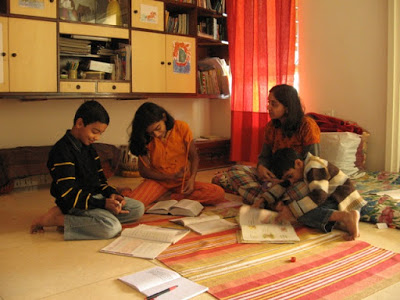The current schools seem to contain the following components:
– The area of land on which the school stands
– The classrooms, labs, library etc., the academic infrastructure
– The playground, swimming pool etc., the sports infrastructure
– The office and other administrative infrastructure, the engine that runs the school
Except for sitting in the classrooms for most of their school day, the children get to use this infrastructure only minimally. However, the parents are willing to pay high fees for this real-estate package deal. Strange!
Let us try a thought experiment…
The classrooms inside a school are insular and don’t interact with each other too much. If we took the classrooms and physically moved them far from each other and still managed to run the administrative engine, it may be possible to have a fully functional school.
Imagine:
– Many microschools with a common name who identify themselves as part of the same networked school
– They function independently but meet at regular intervals in a rented or public space
– They are managed by an online administrative engine that allows things like co-ordination, scheduling and monitoring
– The children create and manage their own independent time-tables and record/ monitor their academic progress using this online tool
– The parents and facilitators have admin access and can see the progress of their children
– The children learn on their own and the facilitator understands and encourages this process
The networked microschools can be thought of as a distributed version of the current schools with the focus shifted from infrastructure and regimentation to relaxed learning. The saving in fees and the reduction in travel-time, stress etc. will be substantial. I think it is an exciting vision. What do you think?
